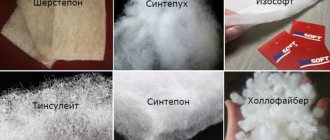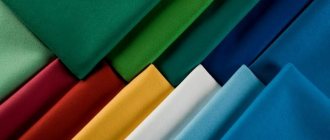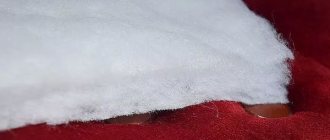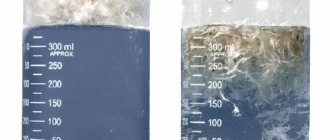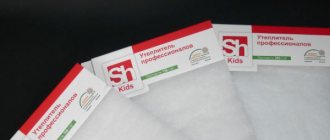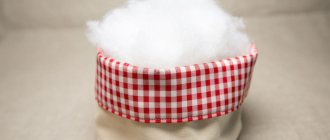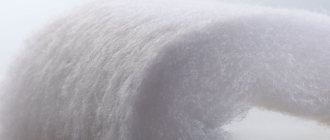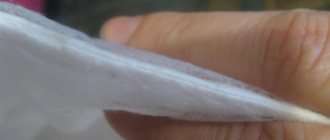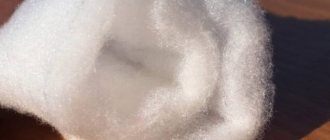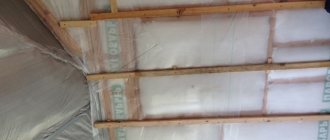Home / Fillers
Back
Published: 06/16/2021
Reading time: 3 min
0
8
The requirements for modern winter clothing are simple. It should be warm, yet weightless and comfortable. It would seem that these characteristics are difficult to combine in one coat or jacket. But with the latest synthetic material, such as isosoft insulation, everything is possible. Read more about its properties, what weather it is designed for, and how to care for it.
- 1 Production and characteristics of the material
- 2 Types of density and temperature conditions
- 3 Advantages and disadvantages
- 4 Caring for clothes with this filler
- 5 Reviews about product quality
- 6 Conclusion
Production and material characteristics
Isosoft insulation is an innovative non-woven product from the Belgian company Libeltex. The structure is twisted polyester threads. Sometimes they are so twisted that they look like microballs. Thanks to such a springy structure, the item fits the body, taking on its contours.
The outer layer of insulation consists of a two-layer silicone polymer coating. Thanks to the heat-sealed surface, the fibers do not move and cold air does not get under the clothes. The insulation has pores to evaporate excess moisture, thereby eliminating the “thermos effect”.
Types of density and temperature conditions
To ensure that the isosoft filler has the widest possible scope of application, the manufacturer has created insulation options that differ in their density. Their main types, intended for certain weather conditions, are presented in the table below:
| Harsh winter | Late fall | Demi-season models |
| from 250 to 300 (g/m2) | from 100 to 160 (g/m2) | from 50 to 75 (g/m2) |
Isosoft insulation for clothing assumes a wide temperature range of use of about 40 degrees: ─30°C ... +10°C.
According to another classification, the following types of isosoft are distinguished:
- Category 103, which is based on the finest fibers. Differs in plasticity. The moisture-repellent composition protects the canvas on both sides. It can be 3─25 mm thick. Requires quilting.
- Modification marked 34. Based on siliconized hollow polyester threads. The material has a thickness of 4─15 mm. The insulation fibers are protected by polymer. No quilting required.
- Product 304 6─22 mm thick. Quilting is not necessary for jackets, but it is required for coats.
Isosoft 101 ─ material for insulating travel equipment and bedding. It is characterized by strong twisting of polyester fibers and elasticity.
Properties of isosoft
Isosoft is a non-woven material made from plastic fine-denier polyester fibers in the form of balls filled with air. It has a heat-sealed surface with a double-sided polymer coating that provides better heat retention and prevents fiber movement. There are several types of isosoft:
Isosoft 100 g/m2
- Isosoft 103. Material with a minimum density (from 25 to 200 g/sq. m), subject to quilting. Thickness – from 3 to 25 mm.
- Isosoft 34. Possible thickness - from 4 to 15 mm, density - from 40 to 200 g/sq. m. Insulation with a density of up to 100 g/sq. cm cannot be quilted.
- Isosoft 304. Density range - from 40 to 250 g/sq.m. m, from 6 to 22 mm. In down jackets and trousers it is located freely, when used in a coat it is quilted.
- Isosoft 101. Used as insulation for sleeping bags. The polyester fibers of this type of isosoft are highly twisted, which ensures complete filling of space and a shock-absorbing effect.
The filler retains heat well and does not pill after long-term use and washing. It can be combined with any fabric and will not “leak” through it, as happens with down, feathers or padding polyester. The fibers “breathe” and are able to wick moisture out. To avoid the greenhouse effect, you need to choose the right fabric for your underwear. It is advisable to choose a fleece fabric that also allows moisture to pass through rather than absorbing it. It is better not to wear cotton and linen items under clothes with isosoft.
Advantages and disadvantages
First, about the advantages of the product. Isosoft insulation for clothing:
- allows air to pass through well, that is, “breathes”;
- excellent heat insulator;
- 5 times thinner compared to padding polyester;
- lightweight, therefore used in clothing for children;
- soft, elastic;
- hypoallergenic, does not create an environment favorable for the proliferation of pathogenic bacteria, fungi, and dust mites;
- wear-resistant;
- fibers do not “bleed” through the lining and main fabric. Thanks to this, isosoft combines well with many materials;
- dries quickly;
- Versatile, can be worn in any weather.
The advantages of isosoft have been duly appreciated by clothing manufacturers for both adults and children. Now you don’t have to dress your child in a heavy fur coat. Jackets and overalls with isosoft do not restrict movement. You can play sports in them without getting cold or sweating.
Isosoft has one minus - its high cost. It was this that became the reason for the low prevalence of high-quality insulation.
What weather is it suitable for?
From the table it’s easy to guess that clothes with low-density insulation are more suitable for warm spring or autumn weather. At the same time, high-density filler is used when sewing outerwear for harsh winters. In such things it will not be cold even at 35 degrees below zero.
For demi-season clothing, the optimal weight of Isosoft insulation is 80 g. The temperature range for which such things are designed ranges from 5° above zero to 5° below zero. In outerwear with such insulation, you don’t have to worry about your child getting cold while walking, and he will be able to move easily, since nothing will restrict his movements.
Isosoft material does not deform and retains its thermal insulation properties even after repeated washing. This is an ideal insulation for use in adult and children's outerwear.
Caring for clothes with this filler
The care rules are the simplest. They are described in detail on the label of the jacket, coat or overalls. A set of standard recommendations:
- A jacket insulated with isosoft should be washed separately from other clothes. This can be done many times, both in a machine and manually, but at temperatures up to 40°C.
- The use of bleaches, especially chlorine-containing ones, is contraindicated. Liquid detergents are recommended for their ability to quickly rinse out of the fiber structure.
- When washing by hand, avoid rubbing and twisting the products so as not to damage the insulation fibers.
- Rinse until clean.
- Soaking is not recommended.
- When washing automatically, select the “delicate” wash program without the “drying” function, but with an additional rinse.
- Spin at minimum speed.
- Dry by hanging vertically, away from direct heat. A well-ventilated room or balcony is suitable for this. Dry filler easily takes its original shape.
- If streaks appear, wash the jacket again, but without detergents.
- Dry cleaning possible.
- Ironing is not recommended.
Advice! When washing automatically, use a special bag or a clean pillowcase. If there are greasy stains, first treat the stains with a soap solution. Before use, it is advisable to test in an inconspicuous place.
Store rolled up. When untwisted, the shape of the products is quickly restored.
Author:
Zakharova Nina Afanasyevna
I hope you like my article! If you find any shortcomings, just write to me about it! I am always ready for a conversation and will answer any questions you have, ask them!
